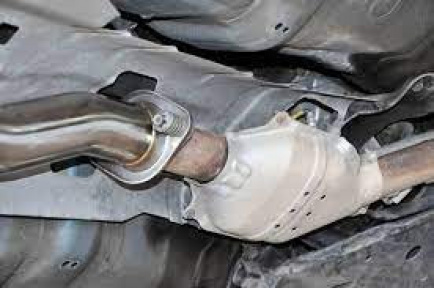
The catalytic converter (CAT) in your car’s exhaust system is responsible for minimizing the effect of toxic gases. But what happens if you drill holes in it? In this article, we’ll explain to you the consequences of drilling holes in the CAT and if you should do it or not?
What does a catalytic converter do?
You must know that car’s combustion process releases hazardous gases as a by-product. The exhaust system must eliminate the gases outside the vehicle. But, the release of toxic gases in the environment would cause pollution and directly affect global warming. So, to control the effects of such dangerous gases, the catalytic converter is fitted in the exhaust system.
The honeycomb design of the CAT creates backpressure and converts dangerous gases like Carbon Monoxide into carbon dioxide and Nitrogen Oxide into Nitrogen and Oxygen. That’s how these toxic gases become less harmful. So, now that you know what precisely a catalytic converter does in an automobile, we’ll move on to the drilling holes part.
The consequences of drilling holes
Firstly, why would one want to drill holes in the catalytic converter? Only two reasons come to mind. Number one is that you want to increase performance, and number two, you want to clean it. Whatever your reason is, you must never drill holes in the CAT.
Automotive enthusiasts might want to benefit from more oxygen that they can gain by drilling holes in the CAT. The thing is, once the combustion takes place, the released exhaust gases must escape the combustion chamber quickly for new oxygen to come in. But, the CAT’s structure is restrictive and creates back pressure, occupying space. It won’t let more oxygen come in until it converts toxic gases into less harmful ones.
The wider openings in the catalytic converter would quickly allow the exhaust gases to move outside the car. And as more oxygen gets in, you get increased horsepower. But is it worth it? The answer is a big no.
Drilling holes will not only cause extreme air pollution and global warming but prove to be poisonous for you as well. Gases like Carbon Monoxide would leak and enter inside the car. Such gases are odorless and colorless, which means that you can neither smell nor see them. You can easily get poisoned by such toxic gas without any warning. So, for the sake of the environment and your own life, you must not damage the CAT at any cost.
What should you do to increase performance or unclog the catalytic cleaner?
You can use other ways like getting a turbocharged engine or installing a cold air intake. Tuning also helps to enhance horsepower. But, drilling holes isn’t the solution for you. Also, to unclog and clean the CAT, you would need to soak it in a mixture of detergent and water overnight. So, it will get clean. Again, there’s no need to tamper with the catalytic converter at any cost.
Conclusion
You must keep the catalytic converter in good shape and well-functioning. Tampering in any way with the CAT might cost you your own life. The pollution would double up. And you’d also fail emission tests required by the state that are important for driving your car.
Same articles

Bridgestone Potenza Re980as vs Michelin Pilot Sport A/S 3 (W- or Y-Speed Rated): What is better to choose?
GuidesIt's time to replace the all-season tires on your car, and you're trying to decide between

2020 Honda Ridgeline: Is it worth it?
GuidesThe 2020 Honda Ridgeline carves out its own niche among pickup trucks. It's not as burly as a full-size truck, but it has more towing and hauling capability than most crossover SUVs. This...

What are car speakers for and should they be installed?
GuidesCar speakers serve two main purposes. The first is to provide high-quality sound reproduction of music, and the second is to act as a safety measure by amplifying sounds from outside the vehicle...
